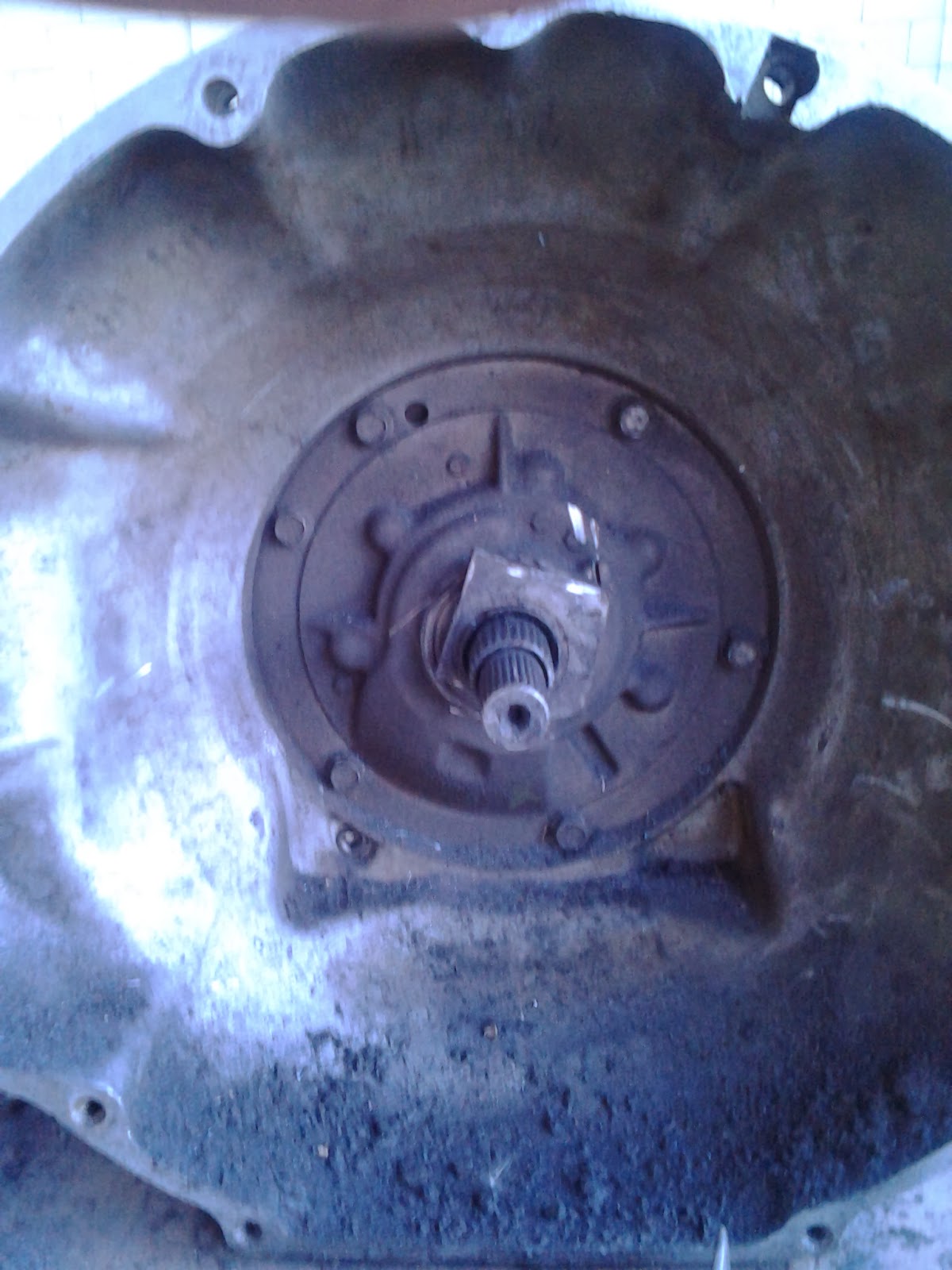 |
| An oldie, but a goodie |
This is the first time the transmission has been opened up
since it failed, and I’m pleased to be able to provide a definitive diagnosis,
as follows, for all the symptoms that have been observed, both by Worth and
myself.
The transmission started out its failure with a screeching
sound when in operation, which turned out to be its death throes. It then
failed entirely, and did not respond at all when the shifter was moved into
gear – it was like the transmission and wheels were unaware of the presence of
the running engine.
Oddly enough, I had a dream, before I even got the
transmission out, that the problem was in the torque converter, and that a new
one would cost $91. Why? Who knows. But, strange to tell, that’s almost exactly
what a replacement will cost, and even if I hadn’t chosen to cut it apart, it
would have needed replacement anyway. Alert readers will remember my long
struggle to remove the converter, which was royally stuck in place. The root
issue was as described by a user in yet another forum I visited…
“…it looks like they overheated the Torque Converter. What happened then is that the fluid in the converter became really hot and caused the inner pump gear to grow and seize. The converter hub is either distorted and wrapped around the step on the ground sleeve and/or is distorted enough that it won't pull out through the bushing. It will take 2000-4000 lbs to pull it out. You'll need a really solid bar and some jack screws. The pump, torque converter, and most likely the ground sleeve are ruined.”
Once I got the torque converter and pump out, I could see
that the hub on the end of the torque converter that connects to the pump just
behind it, had indeed warped. It got deformed so badly that two large pieces
broke off of it (photo 1 below), and the rest curled back and hooked around the bushing (photo 2 below), making
the torque converter impossible to remove.
 |
| that piece of metal in my hand, and another like it, used to help drive the pump, and likely snapped off when the pump gear overheated and seized. |
 |
| slightly below center, the warped and jagged thing around the shaft |
Symptoms: screeching, then an eerie silence and immobility.
Diagnosis: no transmission fluid pressure, due to a terminal
overheating failure of the pump gear and converter hub, which in turn was
likely due to a fluid leak.
Treatment: new torque converter and pump, as part of a complete
rebuild.































